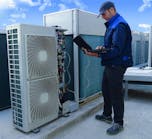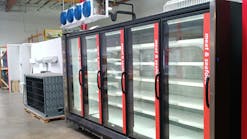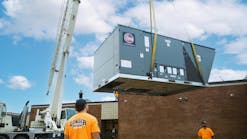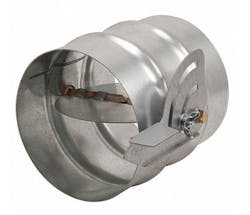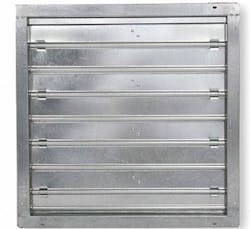Adding fresh air to a heating or cooling system accomplishes two primary indoor air quality goals. It pressurizes a building and increases indoor air quality by diluting polluted or stale indoor air. Adding a fresh air inlet to most systems is typically a simple and relatively inexpensive proposition.
Outside air enters the system through a roof or sidewall vent inlet that collects air from a clean outside location. The air is pulled into the system through a filter, and then a duct connected to the return plenum. Smaller systems usually use the suction side of the air handler fan to pull in the outside air. The air mixes with the return air and then is dispersed evenly throughout the building through the supply duct system.
Each fresh air duct should contain a volume damper to control the volume of the airflow. Another option is a motorized shutoff damper that seals off the duct from the outside when the blower motor isn't running. Since these ducts carry unconditioned outside air, insulation should be added to the outside of the ducting to contain the heat or cold from entering the building.
Positive pressure reduces infiltration of outside air from undesirable locations and prevents ducts, irritants, and other pollutants from entering the building. This control of infiltration may reduce the heat loss or gain sufficient to offset the cost of heating or cooling the outside air.
How Many Btus?
When considering adding a fresh air inlet into a building, remember to consider the impact to the heating or cooling load will have on the building. You can evaluate the increase in load by calculating the BTU introduced in the building by using the following formula:
Fresh Air Sensible Btu = (Fresh Air cfm x Temperature Difference Between Indoor and Outdoor Air) x 1.08.
Let’s create a scenario and see how the formula works.
1. First, we measure the amount of fresh air being pulled into the building, or use the design cfm, if the system isn't built yet. This is the Fresh Air cfm piece of the formula. For this example, let's assume 200 cfm.
2. Next, we determine our temperature differences. For summer and winter seasons, use the outdoor design temperatures and subtract from the design indoor3. Now multiply the 200 cfm by the 50°F temperature difference by the 1.08 constant, and we find that this winter the fresh air will add 10,800 Btu to the heating load of this home. The final question; Is the heating system able to handle the additional load? If we have a natural gas furnace, maybe so. How about if it’s a heat pump? Maybe not.
Dilution
The addition of fresh air into the building has several other benefits. As it pressurizes the building, some air is exhausted out of the building. This dilutes the existing air with fresh air, and forces a percentage of the indoor pollutants out of the building with each air change.
Combustion Air
If there are combustion appliances in the building and the combustion air is being pulled from inside the building, the outside air can be used to as combustion air for the appliances.
A supply register can also be cut into the supply plenum tom pressurize the mechanical room. This assures adequate combustion air for the burners and will increase the flue draft pressure to ensure the furnace or appliances will have adequate draft.
Rob “Doc” Falke serves the industry as president of National Comfort Institute a training company specializing in measuring, rating, improving, and verifying HVAC system performance. If you're an HVAC contractor or technician and have questions or comments about this article, contact Doc at [email protected] or call him at 800/633-7058. Go to NCI’s website at www.nationalcomfortinstitute.com for free information, technical articles and downloads.
